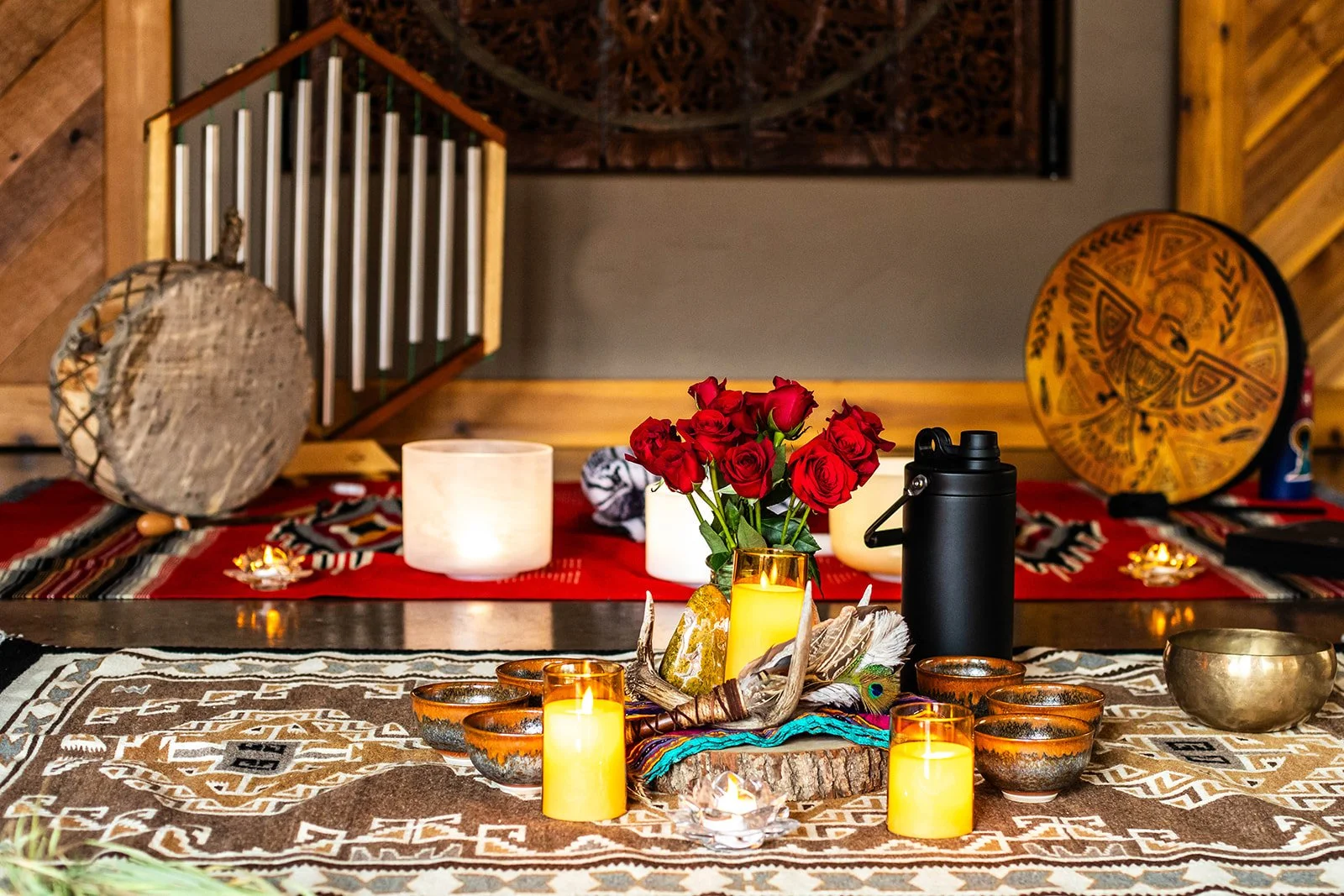
Overtone Singing
Explore the harmonic layers of the voice.
Try saying the word “HURRY” very slowly to hear natural overtones.
Pair overtone vocalization with instruments like the drum, gong, or singing bowls to enhance the layered resonance.
This practice helps unlock intuitive vocal expression and energetic awareness.
Intuitive Singing & Vocal Magic
Begin connecting with your intuitive vocal power—beyond melody, structure, or perfection.
Use breath, feeling, and presence to allow vocal sounds to rise organically.
Sing to the space, to the body, to the moment.
Consider it sound channeling—responding to vibration, not controlling it.
The Primordial “A” Sound
The guttural “Ah” is believed to be the first sound we make entering the world and the last one we release when leaving it.
It appears in sighs, cries, coos, and wails—all primal expressions.
In many traditions, “A” is the mother sound, the seed of all vocalization and manifestation.
Use the “Ah” sound to center, release, ground, or awaken your own voice.
Types of Sacred Songs:
Mantras
Mantras are repetitive vibrational phrases used to focus the mind, open the heart, and connect to specific energies or deities.
They may be chanted silently or aloud to calm the nervous system and direct intention.
Much like reciting a prayer or using a mala, mantras are used to amplify, honor, and invoke.
Common examples:
Medicine Songs
These are sacred songs of healing and spirit, often received or written in ceremonial or devotional settings.
They may come from any language or lineage and are typically sung with heart-centered intention.
Medicine songs often honor nature, ancestors, elements, guides, or personal transformation.
Examples:
Circle Songs
Circle songs are repetitive, easy-to-learn songs that build unity, rhythm, and connection in community spaces.
These songs are excellent for call-and-response, improvisation, and inclusive singing.Use them to open or close gatherings, create group resonance, or foster emotional expression.
Examples:
Icaros
An Icaro is a traditional medicine song from the Quechua lineage, often sung during Ayahuasca ceremonies.
Icaros are channeled by Shamans or Curanderas and are seen as vibrational guides, helping participants navigate altered states.
The tone, rhythm, and cadence of an Icaro can activate, deepen, calm, or close a journey.
They are often called “the language of Ayahuasca,” said to communicate directly with the spirit of the plant.
Examples:
Initiation Invitation:
Listen to the various linked recordings or some of your favorites and notice how the different styles make you feel? What happens in your body, mind, and spirit when you listen?
Vocal Warm-Ups:
Gentle neck rolls and shoulder shrugs to release tension
Diaphragmatic breathing: inhale deeply through the nose, exhale slowly with a “shhh” or “sss” sound
Lip trills or “motorboat” sound to activate breath and tone
Gentle humming, starting low in the chest and moving higher
Sirens: slowly slide voice from low to high and back down (like a vocal wave)
Tongue stretches or light jaw massage to release vocal tension
Yawning and sighing to open the throat and settle the nervous system
Journal and Reflection Prompts:
How does your body respond to your own voice?
What parts of you feel activated when you tone, sing, or chant?
What fears or resistances arise when using your voice in community?
Which vocal practices feel most authentic to you?
Where do you feel called to reclaim or rewild your voice?

